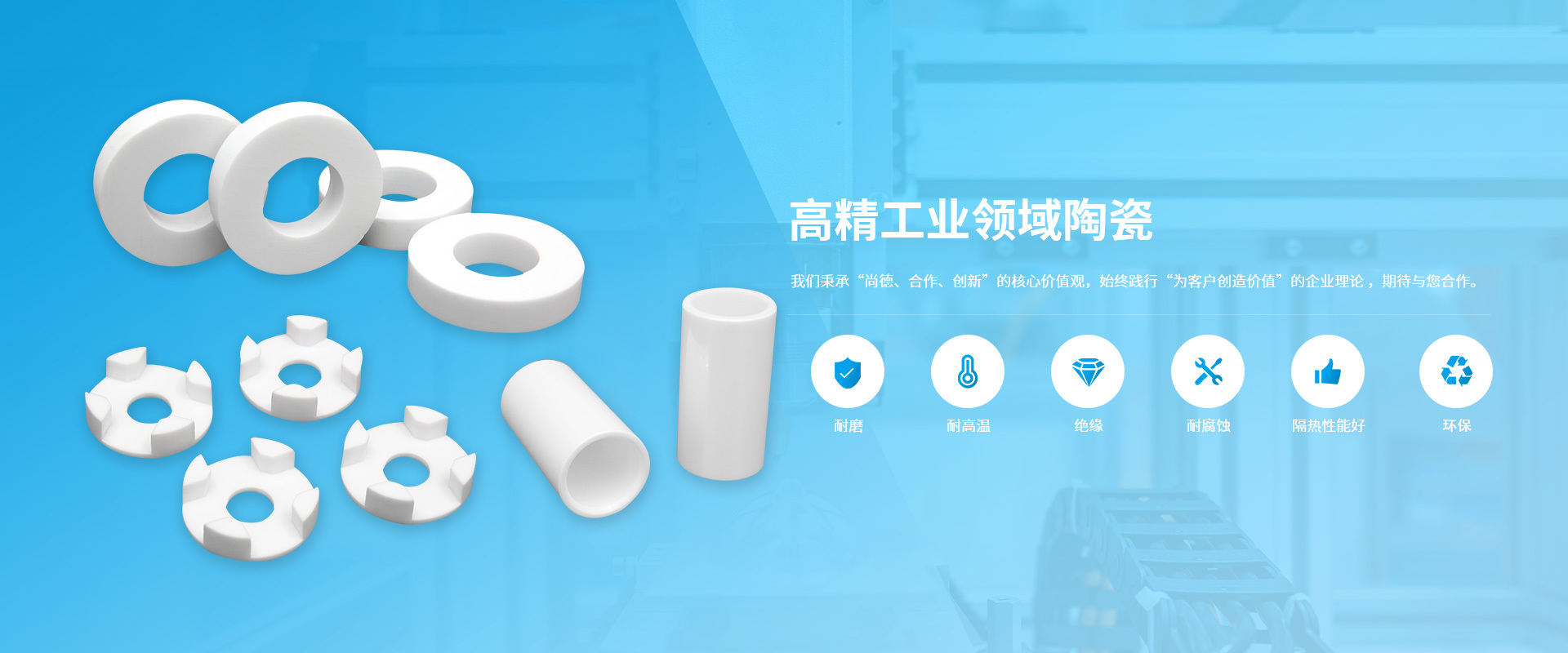
What is the toughening of alumina ceramics, and what methods are there?
Summary: Ceramic alumina and toughening, as the name suggests, refers to the adjustment and increase of toughness in industrial ceramics. The toughening of alumina ceramics has broad application prospects in cutting-edge technology fields such as aerospace and aviation, as well as in industrial fields like machinery, metallurgy, and chemical engineering. However, its most fatal mechanical weakness is its inherent brittleness, which is determined by the structural characteristics of this type of material.
Alumina ceramics and toughening solid, as the name suggests, is the adjustment and increase of toughness for industrial ceramics. The toughening of alumina ceramics has broad application prospects in cutting-edge technology fields such as aerospace and aviation, as well as in industrial fields like machinery, metallurgy, and chemical engineering. However, its most fatal mechanical weakness is its inherent brittleness, which is determined by the structural characteristics of this type of material.
The chemical bonds in ceramic materials are mainly covalent and ionic bonds. These two types of chemical bonds have strong directionality and high bonding strength, making it difficult for significant dislocation movement to occur in the structure. This limits the further promotion of its practical application range. Therefore, the toughening of ceramics, especially alumina ceramics, has become a core topic in the research of structural ceramic materials in recent years.
Toughening methods for alumina ceramics:
1. Alumina toughening The most commonly used toughening method for alumina ceramics is the toughening with nano zirconia (VK-R50). When pure ZrO2 (VK-R50) is added to alumina, particles form ZrO2 (VK-R50) toughened alumina ceramics. When the addition amount is appropriate, the toughness can be significantly improved. The toughening effect mainly comes from the following mechanisms: 1. Refining the alumina grain matrix. 2. Zirconia phase transformation toughening. 3. Micro-crack toughening. 4. Crack deflection and branching. Comparison of mechanical properties between high-purity alumina ceramics and ZrO2 (VK-R50) toughened alumina ceramics: 99% alumina ceramics ZrO2 toughened alumina ceramics Density 3.85 3.93 Flexural strength 350MPa 480MPa Compressive strength 3600MPa 3300MPa Hardness 1900HV 1600HV Impact strength 5MPam1/2 7MPam1/2.
2. Whisker and fiber toughening Whiskers are ceramic single crystals with a certain aspect ratio (diameter 0.1—1.8 um, length 35-150um) and few defects. They have very high strength and are excellent toughening reinforcements for ceramic matrix composites. Fibers are several times longer than ceramic whiskers and are also good toughening agents for ceramics, and both can be practically combined. Whiskers or long fibers such as SiC, Si3N4, C, and SiC are used for composite toughening of alumina ceramics. The addition of whiskers or fibers can increase the fracture surface, thus increasing the crack propagation channels. When the residual energy of crack propagation penetrates into the fibers (whiskers), causing fiber (whisker) pullout, debonding, and fracture, it leads to the consumption of fracture energy or deflection of crack propagation direction, thereby improving the toughness of the composite material. However, when the content of whiskers and fibers is too high, the arch bridge effect makes densification difficult, leading to a decrease in density and performance.
3. Particle toughening Adding particles with a certain size and high elastic modulus (such as SiC, TiC, TiN, etc.) to alumina materials can promote crack deflection and branching during material fracture, consuming fracture energy and thus improving toughness. Although the toughening effect of particles is not as good as that of whiskers and fibers, using particles as toughening agents to make particle-toughened ceramic matrix composites is simpler and easier for raw material mixing and sintering densification than whisker and fiber composites. Nano-particle reinforced ceramics introduce nano-sized second-phase reinforcement particles, usually smaller than 0.3um, which can significantly improve the room temperature and high-temperature performance of the material, especially the strength value, which increases even more.
4. Self-toughening of alumina The ceramics made from nano-alumina (VK-L30) powder show excellent superplasticity at low temperatures without adding plasticizers. Nano-alumina (VK-L30) has a good effect on improving the shape and grain boundary characteristics of ceramic grains. By reasonably selecting components and processes, some alumina grains can develop in situ into columnar grains with a high aspect ratio during sintering, thus obtaining a toughening mechanism of whiskers. This is also called in-situ toughening, which eliminates the incompatibility between the matrix phase and the reinforcement phase, ensures the thermodynamic stability of the matrix phase and the reinforcement phase, and keeps the interface clean and well bonded.
In addition, controlling the microstructure; changing grain shape, particle size, grain boundary characteristics, porosity, etc. to improve fracture toughness; using sub-micron and uniformly distributed alumina; increasing the purity of alumina powder to improve the organizational structure. These are all effective means to increase the toughness of alumina ceramics.
Previous:
Online message
* Note: Please be sure to fill in the information accurately and keep the communication unblocked, we will get in touch with you as soon as possible








